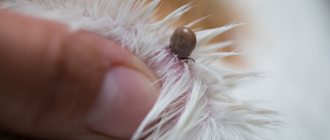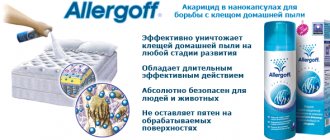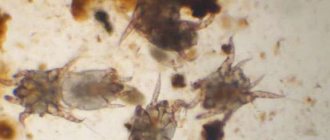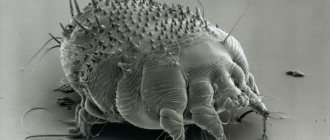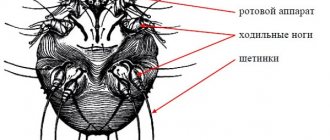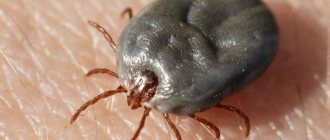Features of demodicosis of the eyelids
Blepharitis has quite a lot of varieties, which have one thing in common: they all cause discomfort to a person and are a threat to his vision and the body as a whole.
In this article
- Features of demodicosis of the eyelids
- Demodicosis of the eyelids: symptoms and diagnosis
- Causes of eyelid disease
- Treatment
- Treatment regimen
- Medicines
- Non-drug therapy
- Prevention
The causes of the disease and its type can only be diagnosed by a doctor. Demodex mites are opportunistic parasitic organisms that live in hair follicles and meibomian glands. About 70% of the population are its carriers, but Demodex manifests itself only in cases where the body’s protective barriers are weakened and there is a metabolic disorder. Most often the disease occurs in middle-aged and elderly people. It can also appear in children with chronic diseases of the gastrointestinal tract, lungs and children suffering from farsightedness.
As a rule, the mite is located on the eyelids, facial skin, forehead, chin, and nasolabial folds. Its waste products provoke:
- allergic reactions;
- development of seborrhea and acne on the face;
- eye damage.
Demodicosis of the eyelids is chronic and can worsen in spring and autumn. It is quite difficult to cure; on average, the treatment process takes 2 months.
General information about the parasite and the disease it causes
The causative agents of demodicosis are representatives of the genus Demodex. The genus includes about 65 species. Man is the host of 2 representatives: Demodex Folliculorum and Demodex brevis. They are called eyelash mites according to their location on the host’s body. These arachnids are included in the group of opportunistic pathogens. This means that long-term carriage develops into ophthalmodemodecosis (eye demodicosis) when the state of the body changes (for example, with a decrease in immunity) or environmental conditions.
Few people will be able to describe the appearance of the Demodex eyelash mite, since it is not visible to the naked eye. Adults have an elongated shape, due to which they resemble worms. Animals have 4 pairs of limbs and move quite quickly. The translucent body of the eye mite consists of 2 sections that are not separated from each other. There is a small shield on the back. The integument is scaly, and each paw is equipped with a pair of claws. These devices help the mites to attach themselves inside the hair follicle.
The size of the parasites is small: the length of the female is up to 0.4 mm, and the male is 0.3 mm. Representatives of Demodex brevis differ from Demodex Folliculorum only in their smaller size. The mouthparts of a spoke-shaped tick are adapted to feeding on the secretions of the sebaceous glands and skin cells.
This is interesting: The lifespan of eyelash mites is about 4 weeks. Most of this time they are under the skin. On the surface, the parasites only mate or stay for a short time, moving into new hair follicles.
The life cycle consists of 4 stages: egg, larva, nymph, adult insect. After fertilization, female eyelash mites lay about 20 eggs in the cavity of the follicles, and male individuals die. After a few days, the larvae hatch, and after another week they develop into sexually mature individuals. Old mites die and decompose in the follicles.
Ironwort acne prefers to settle on the skin of the face, eyelids, head, and less often - chest, back. Eyelash mites do not like sunlight. Therefore, it is active at night. This explains the occurrence of unpleasant symptoms in the late afternoon.
Demodicosis is an infectious disease whose source is humans. The transmission mechanism of eyelash mites is contact. Infection is promoted by:
- close contact with a sick person or a tick carrier;
- using only hygiene products, creams;
- insufficiently processed bed linen (in a hotel, train);
- careless handling of cosmetic instruments in a beauty salon.
Demodex eyelash mites are not adapted to live independently, but can remain outside the human body for a long time. So, at home, at a temperature of about 20 degrees, parasites remain viable in creams, water, and skin flakes for about 20 days.
Representatives of the genus Demodex also parasitize domestic animals (cats, dogs). But four-legged friends cannot infect humans, since demodicosis in them is caused by another type of pathogen.
Eye mites are present on the skin of almost most people. For a disease to occur, a number of circumstances must coincide:
- violation of the skin structure;
- change in skin pH (towards the acidic side);
- decreased local immunity;
- increased sebum production.
Infection can also develop when typical prerequisites for it have not been identified.
The eyelash mite is activated under the influence of the following factors:
- prolonged severe stress;
- working conditions (exposure to high or low temperatures);
- hormone therapy;
- long-term insolation;
- frequent visits to the sauna, bathhouse;
- skin diseases, allergies;
- chronic pathology of the gastrointestinal tract;
- diseases of the organs of vision;
- endocrine diseases;
- periods of hormonal changes in the body (pregnancy; menopause, teenage changes);
- alcoholism;
- consumption of large amounts of seasonings, coffee, hot dishes.
Demodicosis of the eyelids: symptoms and diagnosis
Symptoms of tick-borne blepharitis include eye fatigue, itching, swelling, hyperemia of the edges of the eyelids, peeling of the skin at the roots of the eyelashes. The disease is highly invasive.
The affected eyelid looks like this:
- there is a coating along its edge;
- eyelashes stuck together;
- Crusts, so-called muffs, are observed at the roots of the eyelashes.
There is a history of frequent styes, eyelash loss, acne and psoriasis. The first symptoms of infection are redness and peeling of the skin, the eyelid immediately thickens, a feeling of heaviness and swelling appears, and the eyes become very watery. There is also excessive dryness of the cornea, which causes pain and is comparable to the sensations that occur when a foreign body enters the eye. At the same time, the eyelashes become thinner and brittle, and begin to fall out significantly. Purulent discharge accumulates in the corners of the eyes, and a filmy feeling appears. In advanced stages of the disease, mites can move to the face, causing scaly areas with severe itching and painful ulcerations. Operational diagnosis is carried out as follows. 8 eyelashes are taken from each eye and placed in a drop of an alkaline solution or a mixture of glycerin + saline solution. After this, they are covered with a coverslip and examined under a microscope.
Reasons for the appearance of demodex on eyelashes
The reasons for the reproduction of ciliary demodicosis include:
- Hormonal imbalance within the body affects the condition of the skin. Many opportunistic microorganisms live here. They begin to multiply intensively, which is manifested by pustular rashes and acne on the skin of the face. Hormonal disorders are observed in adolescence and pregnancy.
- Activation of demodex occurs when working in high temperature conditions, which negatively affects the local immunity of the skin and provokes the proliferation of the parasite.
- Clinical manifestations of tick-borne lesions of the skin of the eyelids and eyelashes are associated with symptoms of dermatological, infectious, and ophthalmological pathologies.
- Frequent respiratory diseases.
- Immune system dysfunction.
- Violation of personal hygiene. According to statistics, 50% of cases of eyelash mite infection are associated with neglect of basic hygiene rules.
- Abuse of fatty foods and flour products.
- Popular cosmetic procedures (extensions, coloring) can lead to damage to the integrity of the skin of the eyelids. The situation is accompanied by the activation of opportunistic flora.
- Surgical interventions on the eye result in disruption of the protective function of the skin.
The secondary factors of demodex on the eyelashes that provoke the disease include:
- poor environmental conditions;
- bad habits;
- stressful situations;
- emotional instability;
- power supply errors.
The risk group for the occurrence of ciliary demodicosis is:
- People with visual impairment (astigmatism, myopia, hypermetropia).
- Employees of enterprises where they use high temperatures and harmful substances.
- Postoperative ophthalmological patients.
- Patients with metabolic disorders (diabetes mellitus, thyrotoxicosis, hypothyroidism).
- Frequently suffer from colds.
Causes of eyelid disease
Infection with tick-borne blepharitis occurs through contact and household contact. The infection is hidden in bedding (such as feather pillows) or dust. Ticks can also appear from the outside: they are able to live autonomously in humid conditions for up to three days.
The cause of the development of the disease can also be disturbances in the functioning of the nervous or endocrine systems, liver, and gastrointestinal tract. Also, the likelihood of infection increases due to heredity.
Other factors that provoke the occurrence of demodectic blepharitis:
- sunburn or prolonged exposure to high temperatures;
- non-compliance with sanitary standards;
- ophthalmological operations;
- acne-prone skin;
- frequent peelings and facial cleansing, solariums and an overabundance of other cosmetic procedures.
Causes
Eye mites in humans appear as a result of diseases and factors that provoke the active growth of pests. This is often associated with the following ailments:
- Diabetes.
- Gastrointestinal diseases.
- Hormonal imbalances.
- Frequent colds.
- Infectious diseases.
- Hepatitis A, B and C.
The disease worsens for the following reasons:
- Pregnancy and postpartum period.
- In newborns and the elderly.
- Metabolic disease.
- Taking medications that reduce immunity.
- Long-term use of antibiotics or corticosteroids.
- Abrupt climate change.
- Cosmetology procedures.
- Burns, excessive tanning, sauna use.
- Oily skin.
- Stress and depression.
Eye mites in humans can appear after contact with:
- Birds.
- Pets.
- Feather fillings in pillows.
- Cosmetics and household items contaminated by a sick individual.
- Carrier of infection.
- Poorly treated bed linen.
- Contaminated instruments (for example, medical instruments).
After the first exacerbation of the disease, if it is not eliminated, a chronic form develops. The patient expects regular relapses. In this case, treatment of eye mites in humans becomes more complicated. Relapses can occur when climate conditions change, or during other diseases as a complication.
Treatment
Treatment of tick-borne blepharitis of the eyelids requires more time than other forms of this disease. Moreover, it consists not only in taking medications, but also in special attention to personal hygiene.
For this disease, it is recommended to massage the eyelids with Demalan cream, which quite effectively fights demodex.
Before performing a massage, it is recommended to treat the eyelids with a pharmaceutical tincture of calendula or eucalyptus. After the eyelids dry, rub the cream in with massaging movements. The procedure should be repeated twice a day for 20 days.
Before the second stage of treatment, you need to take a two-week break, after which you continue to massage with Blepharogel No. 2 cream. At the same time, it is worth using “Sulfur Iodine” - a homeopathic medicine that should be taken before meals three times a day, dissolving 8 peas.
Physiotherapeutic procedures such as electrophoresis, ultra-high frequency therapy and magnetic therapy will help speed up recovery. In addition, it is necessary to work on strengthening the immune system, treating dysbiosis, improving the functionality of the digestive tract and lungs.
Important: during treatment you should not visit a bathhouse or sauna; you must protect your eyes from aggressive environmental influences, observe sanitary standards and avoid wearing makeup, which can worsen the course of the disease.
Eyelid massage
Doctors advise performing this procedure to speed up recovery. Massage improves the removal of fatty secretions from the sebaceous glands. This helps remove pests. Also, massage will allow you to quickly penetrate the affected area - hair follicles. In addition, with these effects on the skin, blood circulation is activated and healing is accelerated.
You can massage your eyelids with Blefarogel. Before this, they are cleared of secretions. The cream or gel is applied to the tip of the index finger, then smooth circular movements should be made with the pads. 1-2 minutes are spent on each eyelid. The massage is done with eyes closed.
Treatment regimen
A typical treatment regimen for tick-borne blepharitis of the eyelids is based on three basic steps:
- Using warm compresses to warm the glands. The compress should not cause skin burns. To achieve the desired effect, it is enough to hold the compress for 5 minutes 4 times a day.
- Cleansing the eyelids from peeling skin, crusts and other elements of secretion. This can be done using baby shampoo, a few drops of which dissolve in water. A cotton pad is soaked in this solution, and the cleansing process is carried out along the edge of the eyelids.
- Application of antibacterial ointment. The most commonly used is “Tetracycline” or combination formulations with a corticosteroid substance (the latter can only be used in short courses). Ointments against parasites are also used; they will be discussed below.
Eyelash mite: treatment
Treatment of demodicosis of the eyes consists of an integrated approach, which involves the use of medications and proven folk recipes that guarantee a quick recovery.
By medication
Depending on the pathogen that caused the development of the disease, the following is prescribed to eliminate microscopic parasites:
- "Demazol" is an antibacterial eye cream with an anti-inflammatory effect. The product relieves inflammation and swelling of the eyelids, eliminates itching, stimulates metabolic processes in the affected tissues and inhibits the growth of pests.
- "Blepharogel" is a gel for the prevention and treatment of demodicosis. The drug gently cleanses the surface of the eyelid skin from purulent crusts, restores metabolic processes, relieves irritation, and also helps to normalize the level of moisture in epithelial cells.
– antimicrobial eye drops. The medicine contains several active ingredients, including sodium sulfate and zinc phenosulfonate. Substances suppress the ability of ticks to reproduce and provoke their death.
"Tafazol"- “Chlorhexidine” is an antiseptic solution for treating the eyes, eliminating not only pests, but also the consequences of their activity on the skin.
- Metronidazole is an antibiotic in tablet form. The medicine strengthens local immunity, fights manifestations of the inflammatory process, and destroys the DNA of larvae and adults of eyelash mites. With this drug you can get rid of all types of dermatological diseases.
- "Kolbiocin" is a combined action ointment that contains 3 active antibiotic components. The components of the drug act on pathogenic microorganisms at the cellular level, quickly destroying parasites.
- "Diazolin" is an antihistamine that has antipruritic, antiallergic and mild sedative effects. The medication is prescribed for eyelids affected by eye mites during allergies.
- “Prenacid” is a glucocorticosteroid ointment that constricts blood vessels and reduces their permeability. The drug stops inflammatory processes, neutralizes allergic reactions and promotes tissue regeneration.
Folk remedies
Alternative medicine copes with the elimination of eyelash pests no worse than medications, since the basis of this treatment method is herbs that have a positive effect on the condition of the skin and eyes.
To help get rid of ticks:
- Wormwood – has analgesic and antiseptic properties, therefore it is often used to treat demodicosis. To prepare the medicine, pour 150 ml of cold water into a saucepan, add a teaspoon of dry wormwood and place the container on medium heat. Bring the liquid to a boil and cook for 5 minutes. Cool the broth and strain through a sieve or cheesecloth. Soak a cotton pad in the solution, then apply to the affected areas for a few minutes. Repeat the procedure after 4 hours.
- Chamomile is an anti-inflammatory agent that stimulates tissue regeneration. Place 10 grams of dried raw materials in a glass, pour in 200 ml of boiling water. Cover with a lid and leave for 2 hours. Strain and treat eyes no more than 5 times a day.
- Oak bark – eliminates inflammation of the eyelids and suppresses the proliferation of pathogenic microorganisms. Place a tablespoon of crushed oak bark and a glass of hot water into a small container. Boil the mixture. Allow the broth to cool completely, then strain it. Use to wash eyes 2-3 times a day.
Carefully! When straining decoctions, you should make sure that no plant particles that could enter the eye during the procedure get into the finished product.
You will learn about what other folk remedies can treat demodicosis of the eyelids from this video:
Medicines
To prevent tick reproduction, use the following means:
- "Metronidazole" - antimicrobial gel, course of treatment - up to three months;
- “Tetracycline” ointment, “Tobrex” eye drops, “Tsipromed” - antibacterial agents that help prevent infection, the course of treatment for demodicosis is up to two weeks;
- eye drops “Vitabakt”, “Okomistin” - antiseptics that help prevent the appearance of other infections, the course of treatment is from one to two weeks;
- drops “Opatonol”, “Lecrolin” - antihistamines that help get rid of allergic symptoms, course - one week;
- drops "Indocollir", "Diclo-f" - non-steroidal drugs prescribed when non-infectious diseases are added to the infection;
- drops such as “Artificial tears” - used for dry eyes, the course of treatment is up to two months.
Treatment of blepharitis of the eyelids should be carried out simultaneously with treatment of the face. So, to remove waste products of parasites, washing your face with antibacterial soap should be supplemented with a massage. To prevent re-infection, it is recommended:
- use disposable wipes to remove dirt from the face and eyelids;
- iron pillowcases and towels daily;
- regularly clean glasses, razors and other items in contact with the face from contamination;
- exclude cosmetics and get rid of products that have come into contact with parasites.
For a complete recovery, close contact with other people should be avoided.
Hygiene if you have eye mites
Symptomatic treatment of pathology must be supported by diet therapy and hygienic actions. Demodex mites die on eyelashes if the following rules are followed:
- Anyone with eye mites should use their own towel to reduce the risk of transmitting the parasitic disease.
- During the period of illness, avoid the use of cosmetics. A sick person should not share his cosmetics with healthy people.
- Objects that come into contact with the patient's face must be thoroughly washed with antiseptic agents.
- It is advisable to change bed linen 2-3 times a week. It must be washed for a long time at high temperatures. The pillowcase on the patient's pillow needs hygienic actions. After washing, iron the laundry on both sides.
- A person suffering from demodex should not visit public places such as saunas, swimming pools, baths.
- It is prohibited to swim in polluted waters.
- Particular attention must be paid to a sick child. He should not scratch his eyes with dirty hands.
Compliance with simple rules, proper diet, timely treatment, special creams and ointments help prevent inflammatory complications of ciliary diseases (conjunctivitis, blepharospasm, keratitis, mites), and allows you to avoid unpleasant consequences after cosmetic procedures.
Non-drug therapy
Treatment of blepharitis can be carried out not only with the help of medications. Non-drug therapy can also be carried out. So, it is useful to wipe your eyelids with decoctions of calendula or chamomile, or make lotions from green or black tea. To enhance the effect, you should resort to physiotherapy. It is worth taking medications to strengthen the immune system: vitamins and vitamin-mineral complexes. During treatment, it is recommended to avoid spicy, sour and salty foods. It is necessary to seek the help of specialists such as a dermatologist, nutritionist, gastroenterologist and allergist. To cleanse the skin, you can use soap with added tar and rinse it off thoroughly, avoiding contact with the cornea. Additionally, tansy can be used as an antiparasitic agent, a strong decoction of which should be rubbed into the surface of the head. Another effective remedy is propolis. It is necessary to dissolve 5 grams in 100 ml of water and instill this solution into the eyes. This will help relieve irritation, dryness and itching.
Kalanchoe juice will help get rid of skin ulcers: the product should be applied to the edges of the eyelids with a cotton swab. If the crust does not come off the eyelids and pus forms, it is worth treating the area with brilliant green diluted with vegetable oil. Tinctures of ginseng root, eleutherococcus, and echinacea are also indicated for the treatment of blepharitis. An integrated approach will help get rid of this complex eye disease.
Prevention
As mentioned above, the demodectic form develops with reduced immunity and poor metabolism. This explains the importance of saturating the body with microelements and substances. This can be done with the help of special preparations and fortified complexes.
Chronic blepharitis tends to return, so people who have already had it once should undergo a preventive course of treatment at least once a year. Preventive medications can be purchased at any pharmacy. Among the preventive measures:
- Maintain hygiene rules: touch your face with clean hands, wash your face when you are in dusty rooms and when there is increased sweating in hot weather, use safety glasses when working with chemicals or bright lighting.
- Avoid injury to eyes.
- Do not neglect glasses if you have diagnosed visual impairments.
- Take breaks from work, avoiding excessive eye strain.
